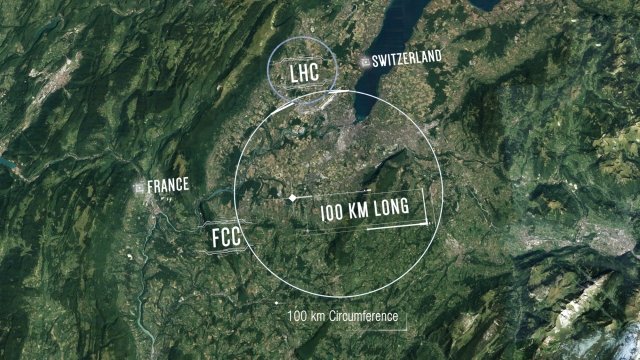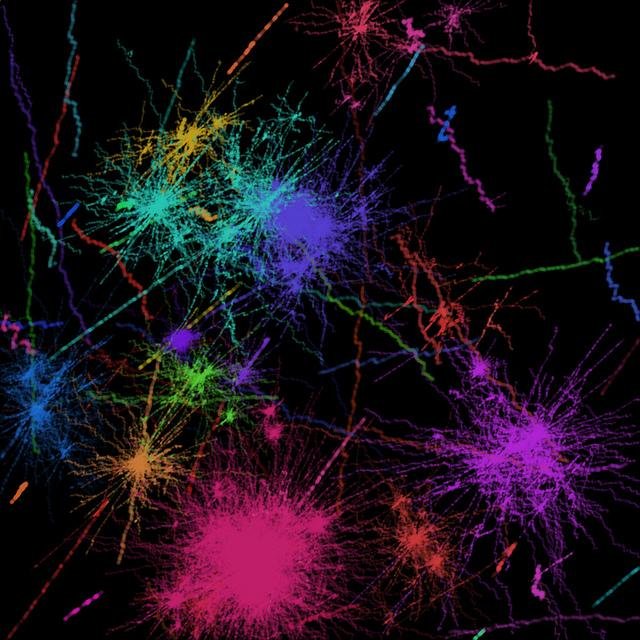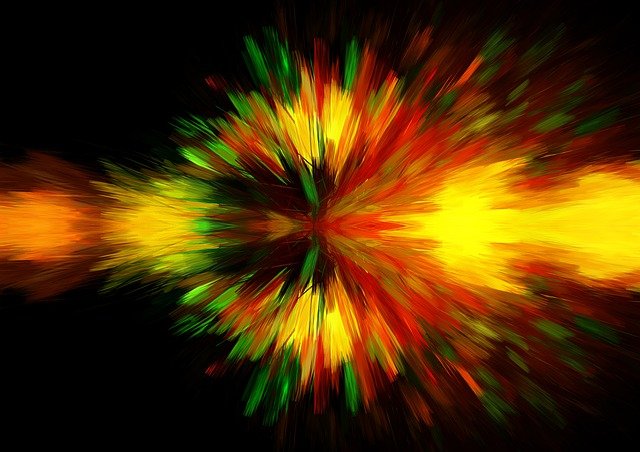Towards a future 100-km-long particle collider at CERN
Last Tuesday, the conceptual design report for a particle collider to be potentially built at CERN, in a not too far future, has been submitted for publication.

[image credits: CERN]
The particle physics community is indeed studying, for a bit more than 4 years, the future experiments that could be built at CERN, once the Large Hadron Collider (the LHC) will be shutdown after 2040.
The so-called FCC (an acronym that stands for a Future Circular Collider), a circular collider of a length of 100 kilometers, is one of them.
The report that has been submitted for publication last Tuesday illustrates which kind of physics we expect to learn for such a machine, or in other words why it is important to build it. It moreover also addresses other important questions such as the costs (30 billions USD for the construction, to be spread over 40 years) and the associated challenges for the society.
From the LHC to the FCC

[image credits: geralt (CC0)]
The keys behind the decision about which next machine should be built originate from the LHC legacy.
The main of these LHC legacy reasons consists in the celebrated Higgs boson, discovered in 2012, as well as in all LHC activities aiming to probe its properties and verify whether the discovered boson behaves is as the Standard Model predicts it. This verification must continue.
There is however another point that is important. LHC data does not feature any new particle or phenomena. We however have good motivations to believe that the Standard Model should be extended into a more fundamental theory of nature. The expected new things are thus (at best) elusive at the energy and intensity scale of the LHC.
The future FCC is expected to run both in the electron-positron and in the proton-proton modes, as well as potentially in the heavy ion and electron-proton modes too. The electron-positron mode is similar to what has been done at the LEP collider, the predecessor of the LHC, but in a more intense way. The proton-proton mode is similar the the LHC but with an energy 7 times larger and a luminosity (i.e. the number of recorded collisions) goal 7 times more important.
Physics opportunities at the FCC
The opportunities around the entire FCC program can be summarized as follows.
First, this machine will allow us to uniquely unravel the properties of the Higgs boson, the W and Z bosons (the mediators of the weak interactions) and the top quark (the heaviest of all known particles).
In particular, the electron-positron setup is expected to produce 1 million Higgs bosons (1 Mega-Higgs), 1 million pairs of top quarks (1 mega-top), 5000 billions Z bosons (5 Tera-Z) and 100 millions W bosons (1 oku-W). This incredible amount of data will allow to corner the particle properties to an unprecedented level and to reduce the room left for potential deviations (or in the most optimistic scenario, to observe those deviations).

[image credits: Stinging eyes (CC BY-SA 2.0)]
In other words, these precision measurements will offer excellent handles to indirectly target new phenomena that could occur at a much higher energy scales and yield small deviations in known quantities.
The FCC program hence consists in the most powerful program allowing to explore the electroweak sector of the Standard Model (i.e. the weak and electromagnetic interactions), including the manner in which the weak bosons get massive (the so-called electroweak symmetry breaking mechanism related to the Higgs boson).
The machine will moreover push further the discovery reach of new particles and sharpen our sensitivity to rare phenomena thanks to the increase in energy and luminosity above-mentioned. For instance, one of the favorite hypothesis for dark matter, the so-called WIMP (weakly-interacting massive particle) paradigm, could be totally excluded by the FCC.
Some of the benefits
As sketched above, the FCC physics program will allow for a deeper understanding of how the universe works and will consequently impact in the strongest terms a worldwide community of 20.000 physicists.

[image credits: Pixabay (CC0)]
But that is not all. An important highly-qualified work force will be formed both for the design of the machine, its operations and the analysis of the data.
These people, that will be trained to tackle complicated problems that require years to be solved, and such skills are always welcome in private companies.
This machine can also be considered as a dreamed playground for detector builders and the accelerator physics community.
For instance, new high-field magnetics will have to be developed and produced in an extremely large amount. The machine will necessitate the development of novel cryogeny techniques and power conversion methods. We can find many more examples, and all open the doors to many applications in engineering (mechanics, surface treatment, super conductivity, novel materials, etc.).
On the other hand, the building of the machine will rely on advances in civil engineering as well. The underground infrastructure will need new efficient tunnelling technologies and ideas to reuse the excavated material will be welcome from geologists and chemists.
And last but not least, computing and communication will be crucial. This includes simulation algorithms, high-performance (parallel) computing, mechatronics, data handling, machine operation, wireless communication, etc.
To make it short, the building of the FCC will involve industry will at many different levels, and important co-development involving both the public and the private sectors could be in order (when reasonably possible).
Take-home message
I took the benefit of the release of the conceptual design report of a future collider to be built at CERN to briefly discuss a little bit what is going on there. As a physicist, I of course put some emphasis on the physics opportunities, that will allow us to push our understanding of the universe to an unprecedented level. But I also mentioned briefly what other fields could get from such a machine.
In summary, building this future machine will lead to a clear gain for the society, despite the important costs. Both for what concerns our understanding of the universe and for the industry as new technologies and methods will have to be developed. It is also important to mention the highly-qualified workforce that will be trained within the FCC project.
SteemSTEM
Make sure to follow SteemSTEM on steemstem.io, Steemit, Facebook, Twitter and Instagram to always be up-to-date on our latest news and ideas. Please also consider to support the project by delegating to @steemstem for a ROI of 65% of our curation rewards (quick delegation links: 50SP | 100SP | 500SP | 1000SP | 5000SP | 10000SP).
That sounds awesome although when you said in the nlt so far future I expected sooner than 20 years :(
This goes all along the timescale of these experiments. The LHC was originally introduced (ok, the idea of an LHC) in 1985-1986, built in the early 2000s and started in 2008. It is expected to run until 2035. 50 years in total.
It is clear that this kind of timescale will hold for any large-scale collider experiment. I personally hope to still be in the field when a new collider start (i.e. not retired or dead).
Thank you for your post, it is very informative!
In your post about new physics you say:
Can you elaborate more on that? Which theory predicts that and why?
Or maybe there is already another post that explains this?
Thank you.
In the Standard Model (and all theories extending it), the fundamental interactions are based on symmetry principles (gauge symmetries). This works super well and reproduce tons of data. However, those symmetries forbid the particles to be massive. One way out is to use spontaneous symmetry breaking (which was proved to work with the discovery of the Higgs boson that consists in a left-over of this mechanism). This allows to keep the symmetries and generate masses for all the particles.
For more information, feel free to have a look in this post, and to come back to me with any further question. I will be glad to answer them.
I'm struggling with the term 'gauge symmetry' and how it is related to the interactions. I've read this article, it became a bit clearer, but still it does not say anything that a symmetry requires particles to be massless, and how breaking the symmetry adds mass.
Can you explain this with some examples?
Thank you.
Let me try without showing any equation :)
We start with the Lagrangian describing the dynamics of the particle physics model. This Lagrangian is an equation containing everything (which particles we have, how they interact, what are their masses, etc.). The Lagrangian must include in particular a mass term for each of the massive particles. However, writing such a mass term would directly violate the symmetry principle you imposed to start with. So mass terms (and thus particle masses) are forbidden. I hope it helps (a little at least) :)
Okay, Lagrangian... I have to study some basics first )
Is it only interaction particles (bosons) which are predicted to be massless or matter particles (fermions) as well?
Both in this case. Only a specific class of fermions can be massive, called vector-like fermions (whose two chiralities behave the same), that can be massive. However, there is no such a vector-like fermion in the Standard Model.
Great to see that there is momentum for a CERN successor.
Hopefully we'll see international collaboration on unprecedented scale to achieve such ambitious project.
This is great way to unite countries for a common purpose.
Posted using Partiko Android
There are several options for the future at CERN, but I must admit the FCC-hh (the proton-proton version) is my favorite :)
Elon Musk is here to help )
Ahaha! I am not sure he is interested in this :p